This review is for the older 2013 IZIP E3 Zuma. You may discover this bike at a garage sale or possibly being sold new at a discount. The best way to tell it apart from the newer model is that the battery pack is mounted in a rear rack. On the new Zuma, the battery is mounted just behind the seat post tube which keeps weight lower, helping to stabilize the ride. You can follow this link to see a video and written review of the new 2014 IZIP Zuma.
The E3 Zuma is my favorite electric bike in the IZIP line and ranks high in my list of ebikes from any brand. That’s because it’s solid, smooth, fast and fun to ride. It’s built on a sturdy cruiser platform that comes in both high step cantilever and low step designs. The price is decent, there are lots of colors to choose from and while it does lack a couple extras I’d like such as fenders and lights, it keeps riding simple and offers pedal assist and throttle modes for different ride styles.
In my experience there are really two types of electric bikes. Those that try to play to the strengths of traditional bikes (lightweight, nimble, responsive) and those that accept the extra weight and size brought on by motors and battery packs and use that to their advantage. The Zuma falls into the later group. It’s not very light, it’s not very nimble and the pedal assist mode isn’t very responsive because it uses pedelec vs. torque sensors. But for these reasons, I love it! The Zuma is sturdy, easy to use and rides more like a Cadillac than a sports car.
In terms of body position this bike feels more like a motorcycle than a mountain or road bike. The seat is oversized and has built in springs to absorb bumps and the handlebars are swept back so you don’t have to lean forward to reach them. The pedals however, aren’t positioned as far forward as other comparable ebikes such as the Pedego Cruiser or Electra Townie Go and presents one distinct advantage. It’s more fun and comfortable to pedal the Zuma! It also comes with seven gears vs. six or just one on the other cruisers respectively.
Pedaling this bike is enjoyable but the electric assist and drive modes are where it really shines. The 500 watt rear hub motor is geared, providing extra torque, and running smooth and quiet. The 36 volt battery delivers enough juice to move large riders easily and even climb medium sized hills. This is the kind of bike that could easily pull a small trailer or support cargo add-ons. The battery driving this system is 11.4 amp hours offering good range and is made with Lithium-ion technology that can endure hundreds of charge cycles before capacity degradation begins.
This bike offers a great stock combination of power and range but I’ve seen several YouTube videos and articles about people who connect even more powerful batteries to overclock their rides to go faster and further. While it’s not officially recommended, I can see why people would choose this platform to experiment with. The frame, dropouts and battery cage are burly! The battery rack itself is welded directly onto the frame and includes a myriad of support bars that double as wheel protectors when using panniers. The downside here is that the oversized bars don’t work well with stock pannier clips but you can always use a saddle bag on top or get a double pannier that slings over the rear rack and doesn’t use clips.
This bike uses the same PAS/TAG electronics and twist throttle that many other Currie bikes do. It’s pretty simple, just press the red power button then select pedal assist (PAS) or twist and go (TAG) with the little black switch and start pedaling to activate the motor or twist the throttle to go. There are three LED lights (green, yellow and red) to display how much power is left. It works well, isn’t too hard to figure out but still offers variety in ride experience. You won’t know precisely how much power is left or how fast you’re going but it isn’t distracting and probably helps keep the bike affordable.
In terms of pedal assist, I’m glad they went with a pedelec sensor on this bike vs. torque sensing because the bike is a little heavier and I prefer to pedal gently vs. straining my legs to activate pedal assist. Some riders may find this “jerky” because the motor kicks in all at once vs. in proportion to the pressure being applied but it’s easy enough to get used to. One think to keep in mind for stopping however is that the motor may continue pushing for a moment after pedaling stops. For more responsive stopping just pull either brake lever which cuts power to the motor.
In summary, this bike looks great and plays to the strengths of its electric components. It’s a heavier build but one that’s powerful, solid and fully featured. I appreciate the chain guard, single-side kickstand that stays up out of the way, comfort seat and reinforced battery rack. It doesn’t hurt that there are several fun colors to choose from including white, black, red, blue, green, yellow and silver. The warranty on the battery and frame are good and Currie, maker of the IZIP line, offers nation wide support.
Pros:
- Solid frame, sturdy aluminum rear rack is welded on
- Powerful 500 watt brushless geared rear hub motor
- Strong 36 volt battery offers 11.4 amp hours for good range
- Comes in many different color options: black, white, silver, blue, green, red, yellow
- Seven gears to choose from when pedaling, good ergonomic position for pedaling
- Quality build: double walled rims, supportive seat, nice leather grips, chain guard, Avid BB5 disc brakes
- Multiple sizes: medium and large high step or smaller step-through
- Oversized tires smooth out the bumps and come pre-Slimed
- Water bottle mount eyelets on both high step and low step frames
- Front fork includes eyelets to mount an after market fender
- Built in chain guide on front ring keeps chain from falling off
Cons:
- No built in lights, add your own and turn them on manually vs. drawing from one central battery pack
- No fenders but there are eyelets on the front and the rear rack blocks some of the rear splash
- Heavy design, weight is positioned towards the rear of the bike, harder to lift and can slide out more easily
- Hard to mount to car racks due to weight distribution and curved topbar
- Harder to find panniers that will work with the thick gauge tubing on rear rack, I recommend a double sided bag that can tie to the top bars
- Plastic and rubberized pedals can be slippery in the rain, would have liked oversized metal ones with better traction
Resources:
- Official Site: https://izipelectric.com/electric-bikes/leisure#desc-bottom
- More Pictures: https://goo.gl/photos/vfsdMR7XsRzbJThv5

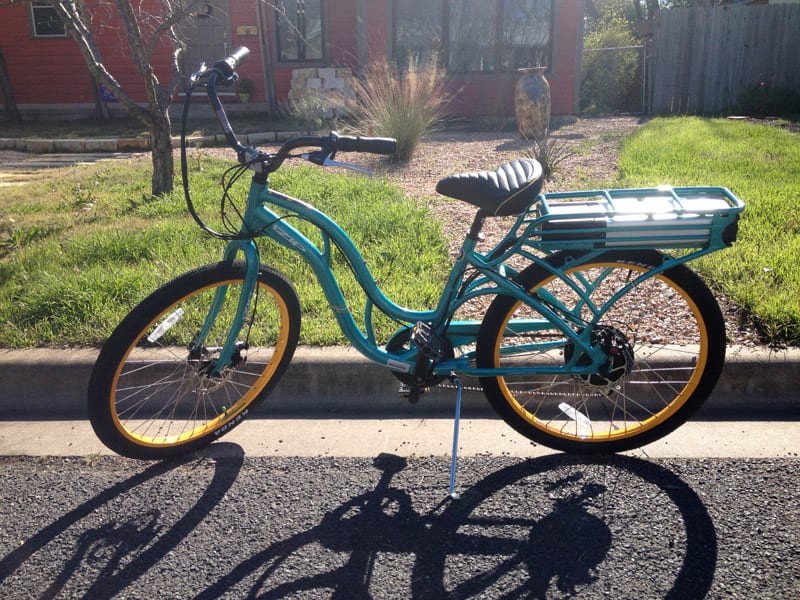
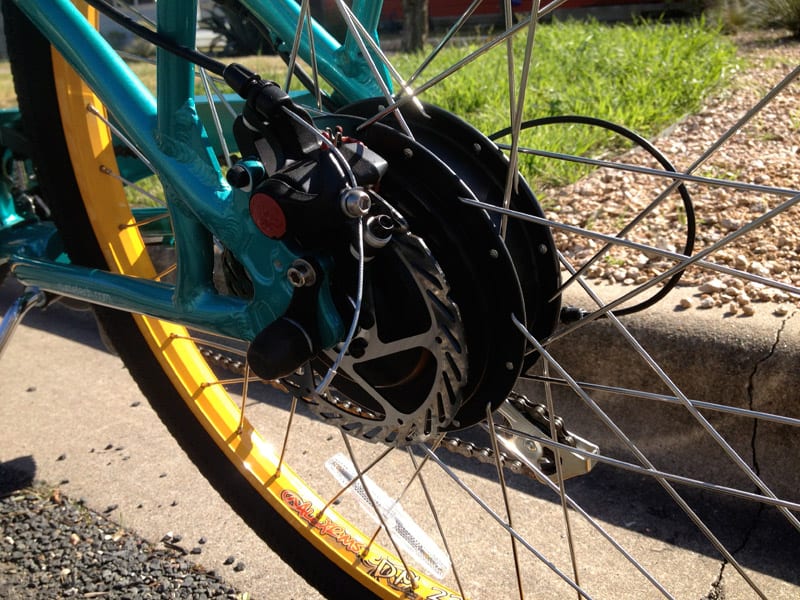
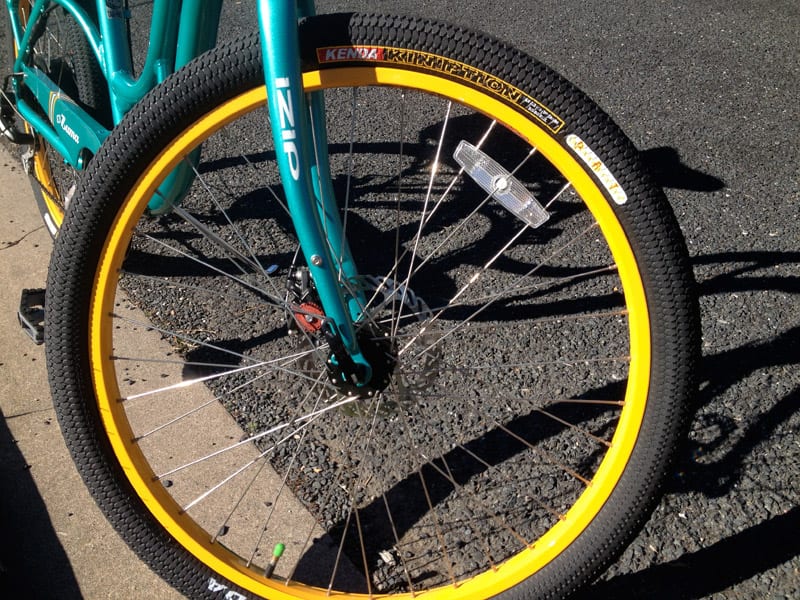
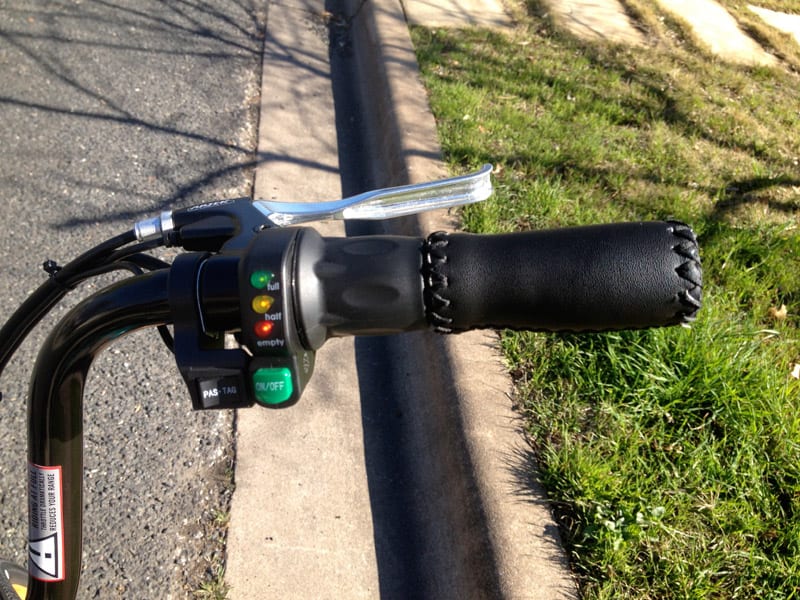

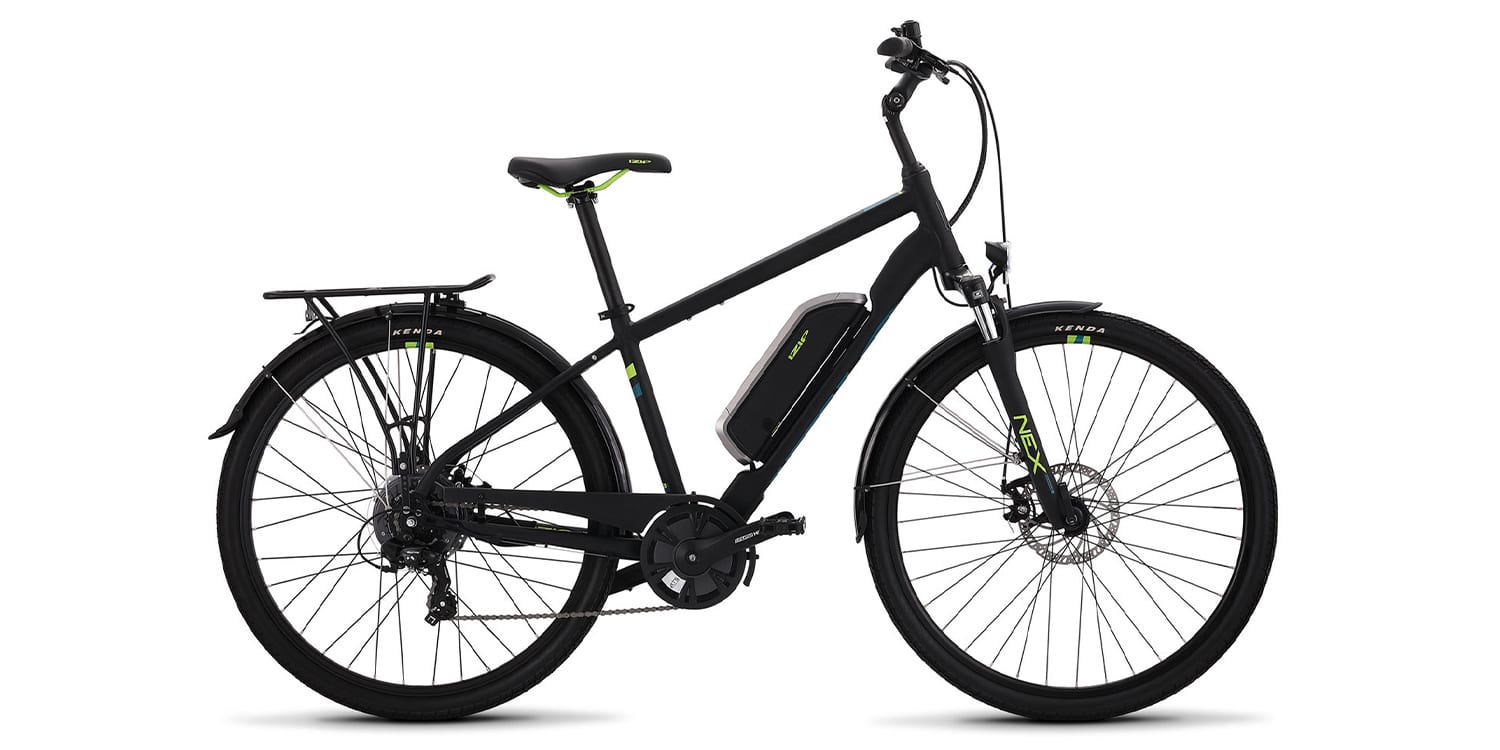
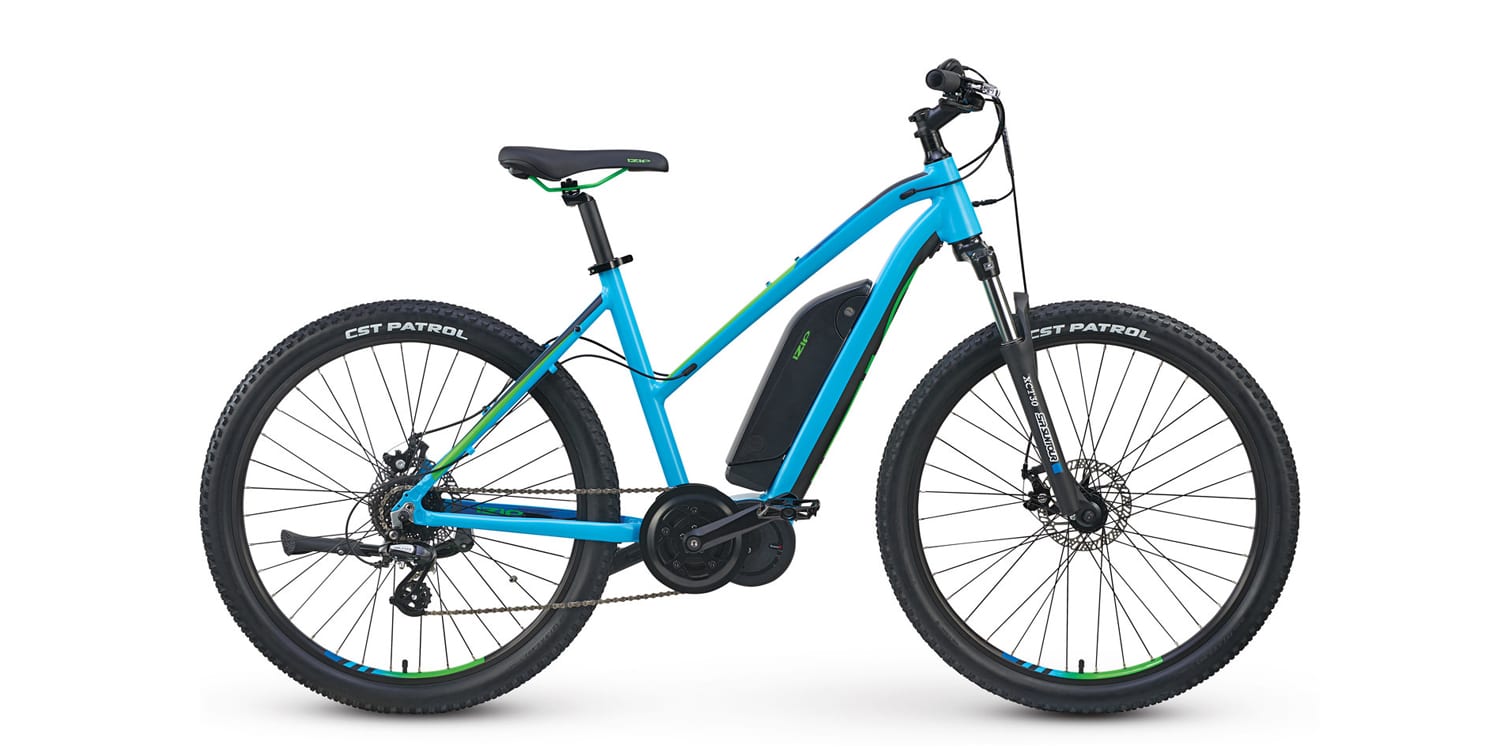
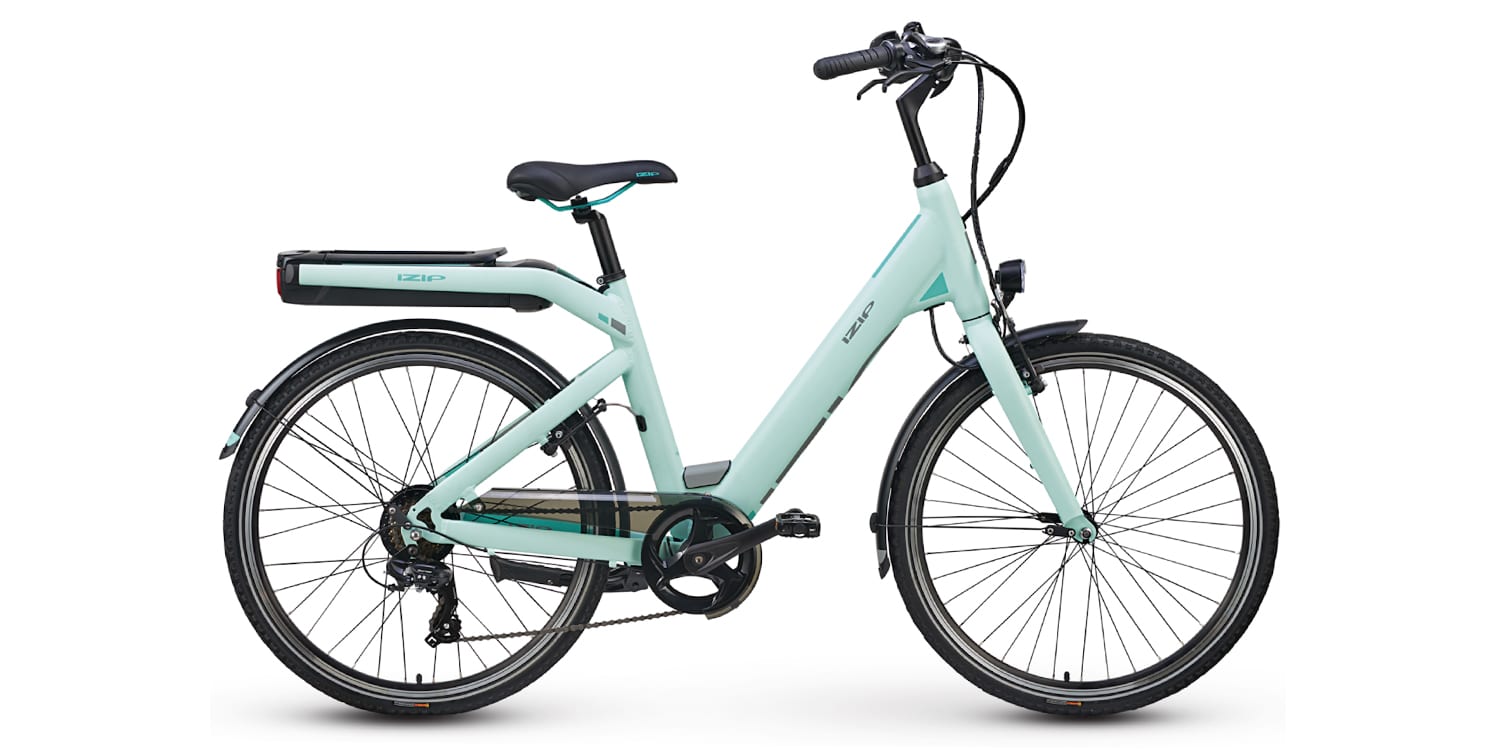
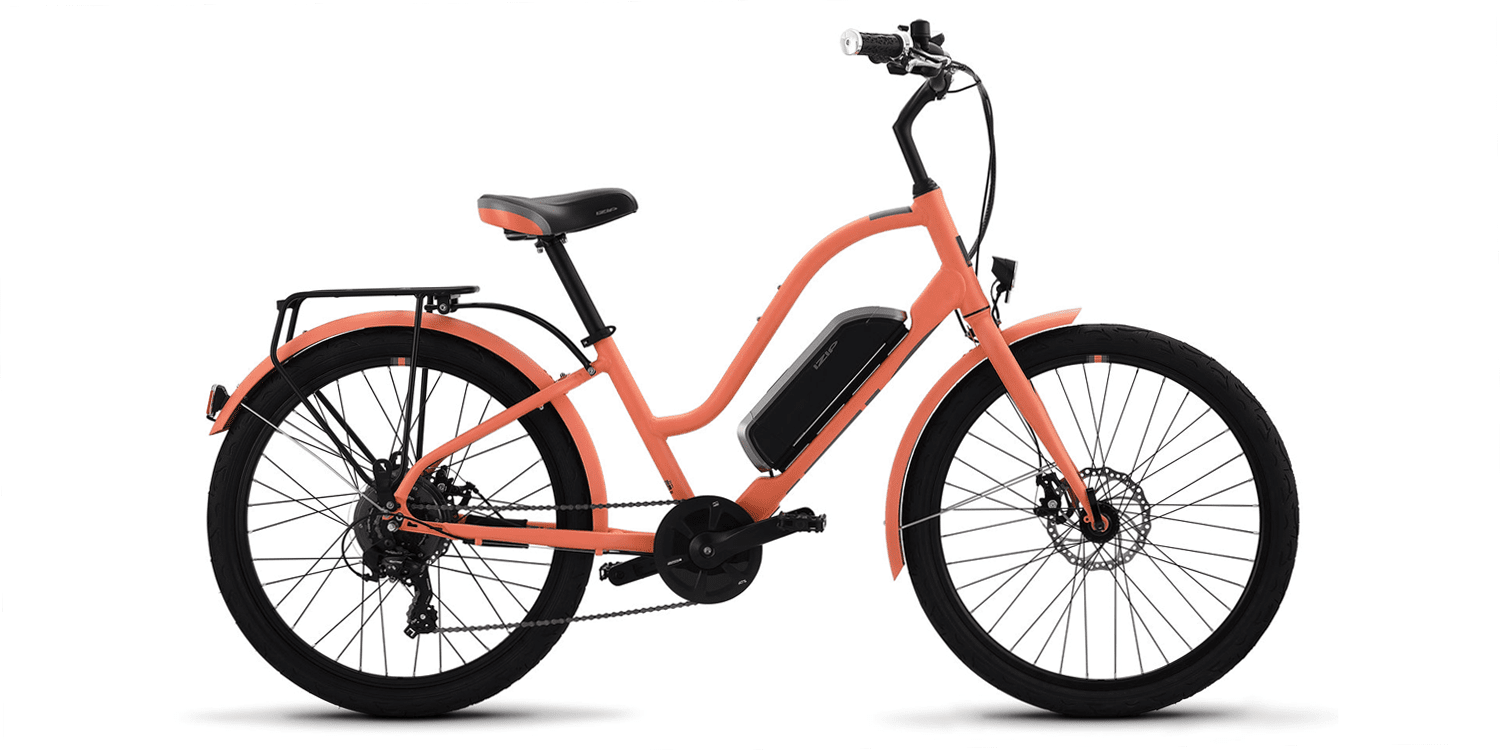
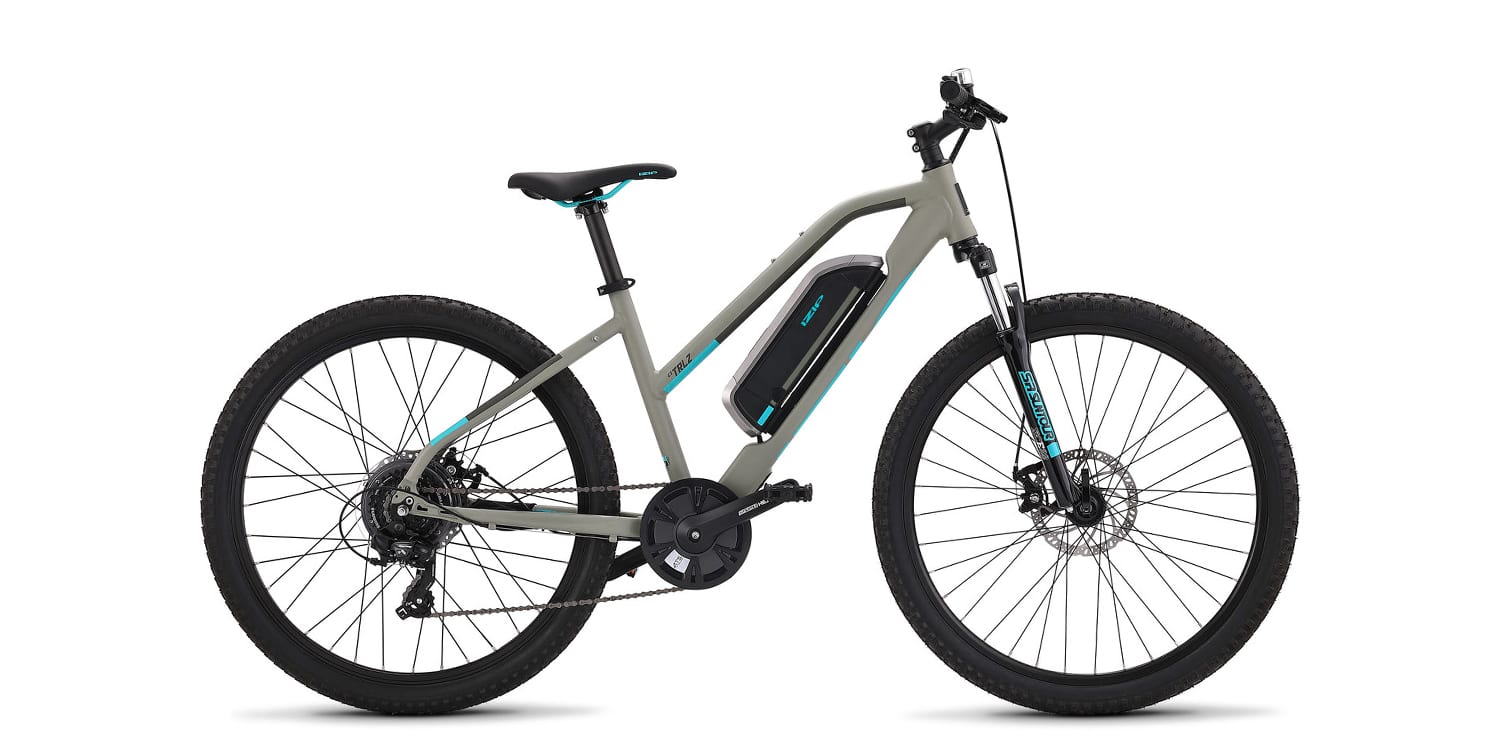

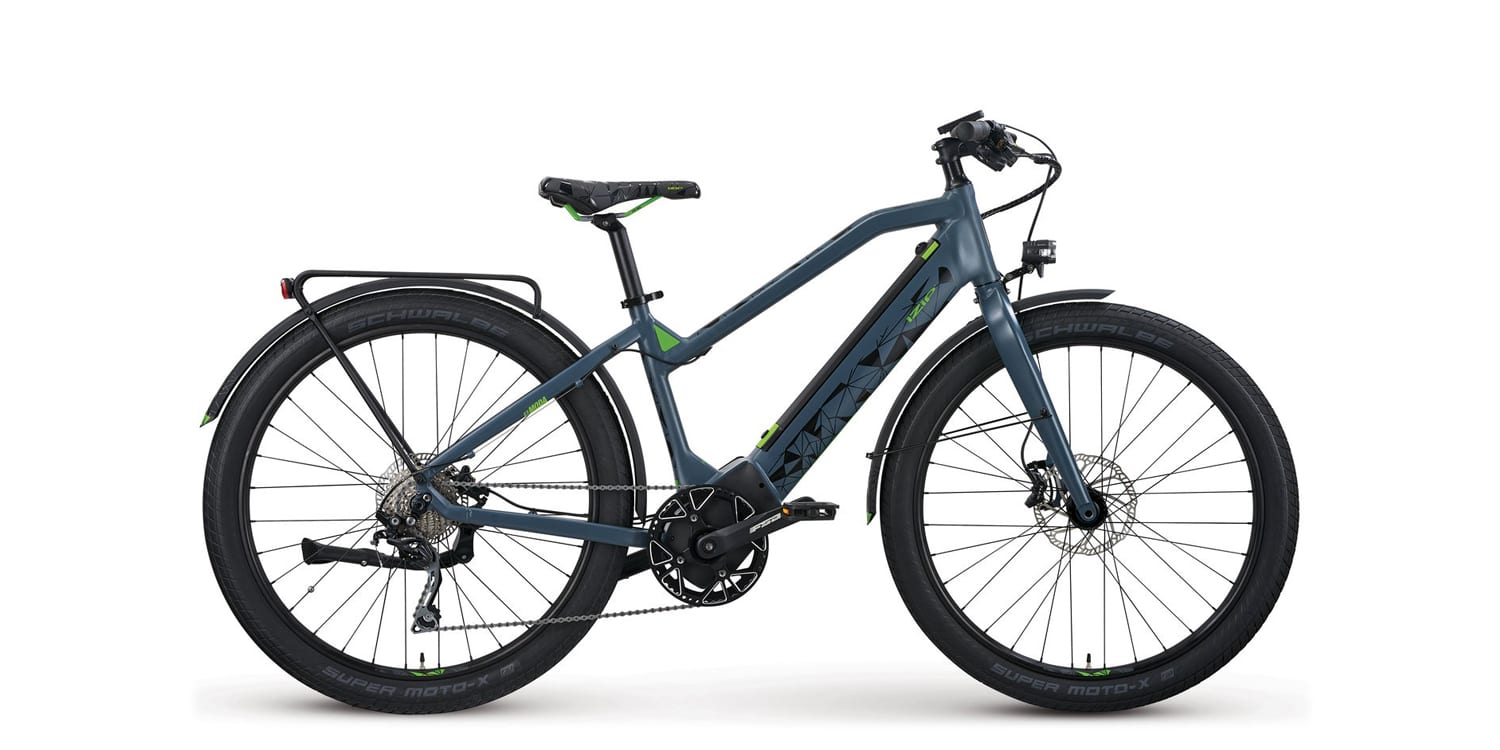
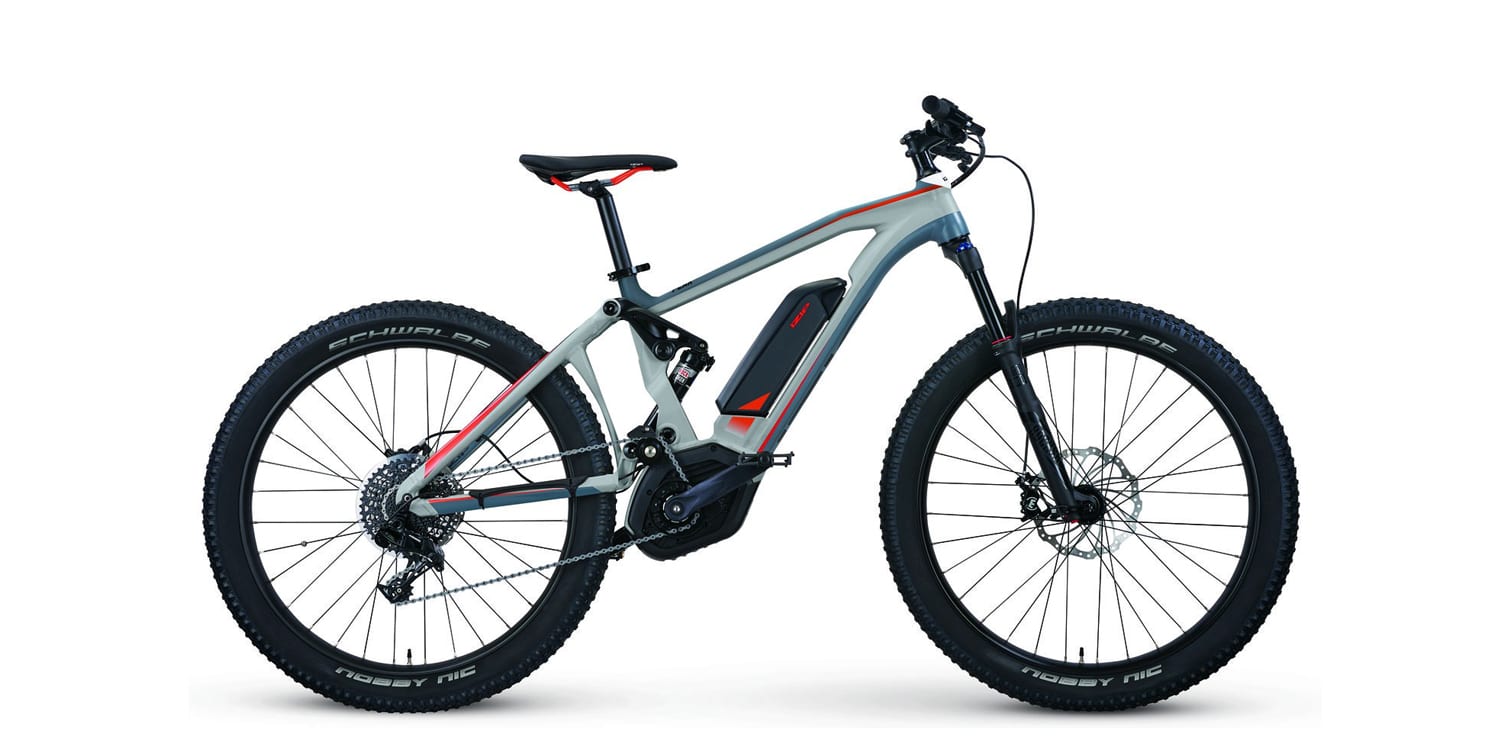
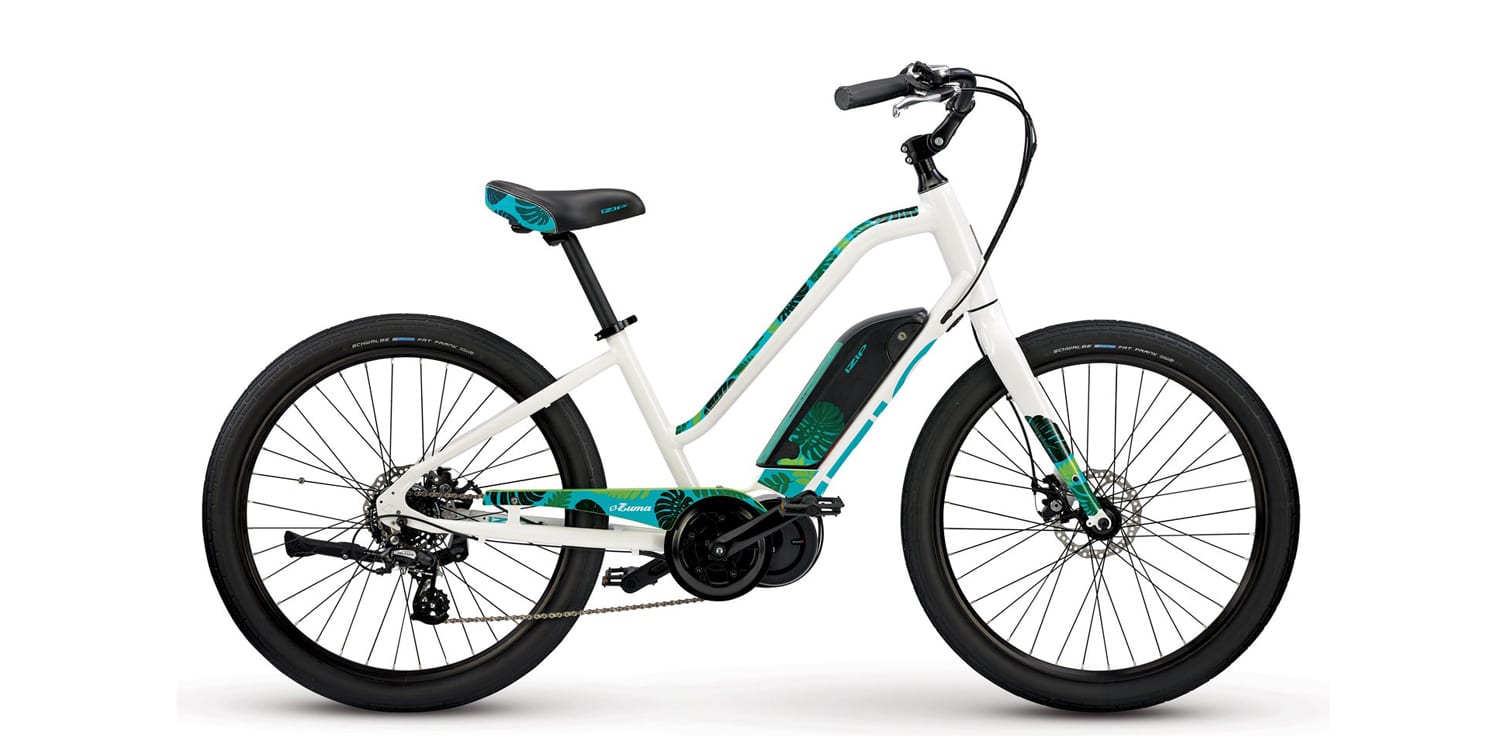
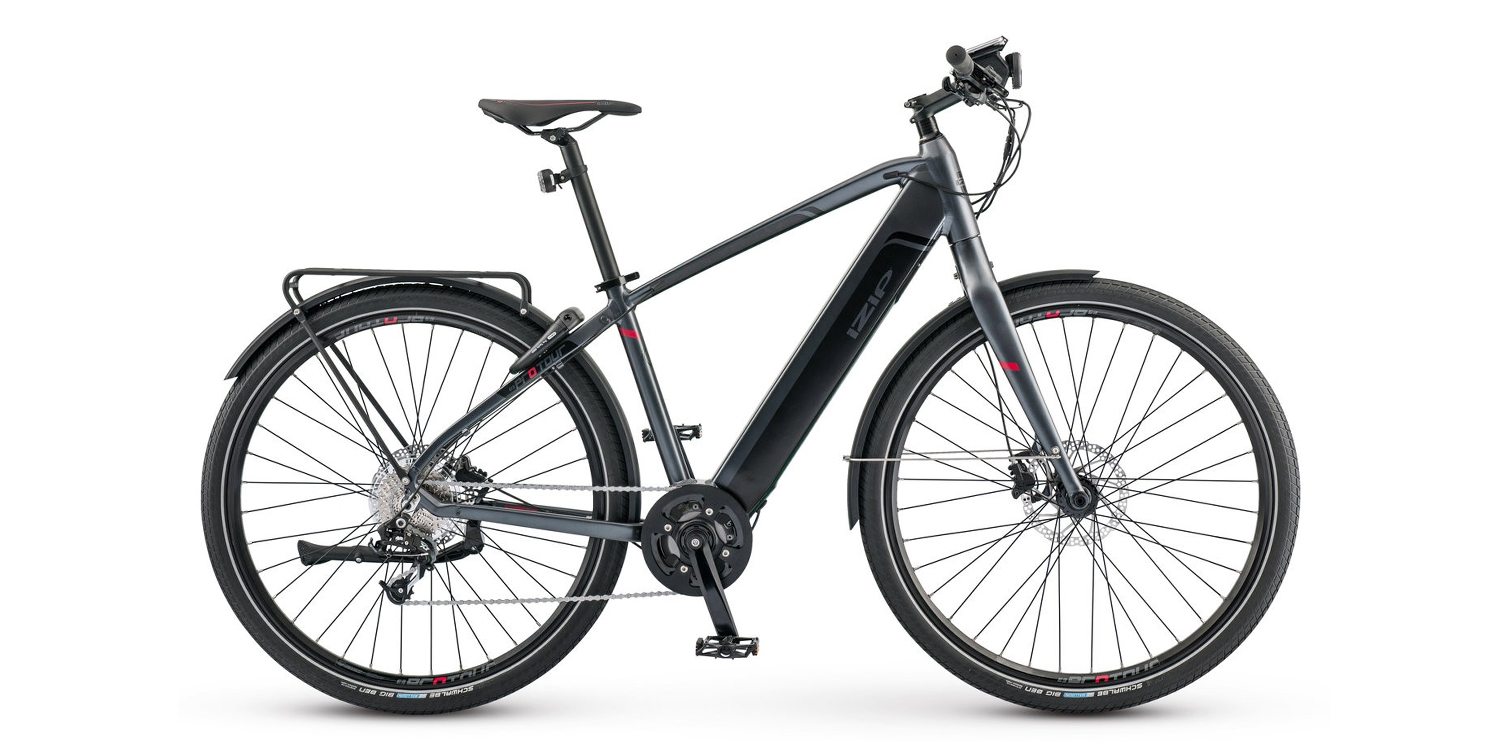
Pat Hagan says
Pros:
Very good bike and i have enjoyed mine over the past 2 years.
Cons:
Be careful before you buy any electric bike. A replacement battery (they do not last forever) is $800 for this bike.
My battery charger failed after 2 years and had to be replaced. The dealer said he had never seen this before. I asked him to talk to the Currie Sales Rep. to see if we could negotiate a discount, since this is a rare event. Currie wasn’t interested. A new charger is $200 MSRP plus shipping and taxes. I found the exact same battery on the internet for $168 including taxes. I do not know what the shipping cost is yet, but I am sure it is not $46.
Slay says
Any advice on what kid seats might work on the rear rack for this? I have a 2 yr old and she’s eager for ride-a-longs.
Court Rye says
Hi Slay! I have very little experience with child seats but constantly see the Yepp! brand used on the rear rack as well as front handle bars and racks. They seem pretty versatile but you might need to modify the rack a bit to make it fit perfectly. You could always ask for advice in the EBR forums for this bike, the IZIP section is pretty active :)
Dave Kelman says
The saga continues!
Lots of highlights but significant lowlights. This one will prove expensive and involves water entering the hub motor between season one and season 2, which probably rusted the bearings some so now the motor is loud and sticky. Rather than throw the motor out I was hoping to get it opened, cleaned, and lubricated. Unfortunately the motor looks like it’s completely sealed, except of course against water! So like so many other things in life today these motors are NOT made to fix, just to throw away.
I’m hoping that by trying the put oil in the motor along the same route that the water got in that the rust, dirt etc will work itself out. Otherwise it’s a $500-700 replacement motor or wheel, and that’s after $300 or so in futile repair costs. Almost what the bike cost me. But when this bike is working properly it’s a really fun ride.
So, warning to everyone out there, don’t ride in wet conditions or store your bike outside unless it’s totally covered. Perhaps my next bike will be a folder which would be easier to store in my basement, or I’ll rent space in someone’s garage.
Court Rye says
Hi Dave, sorry to hear about the expenses and challenges related to the hub motor. Thanks for sharing your tips about dry storage… I do think folding bikes are cool for that reason. Even sheds can get dusty and humid and depending on the parts used to construct a bike, you’ll see rust or some stickiness. I guess it depends on where you live as well.